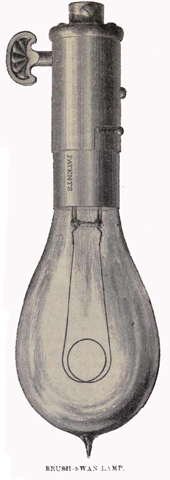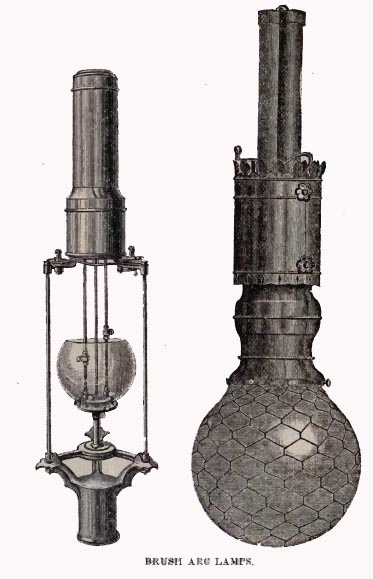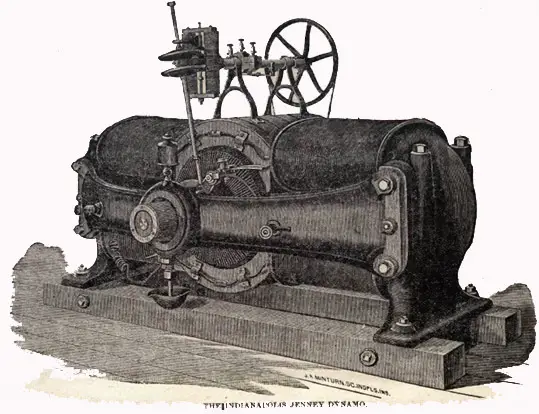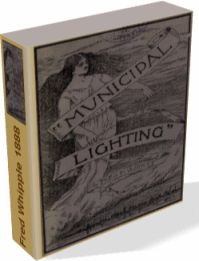History of Lighting
In both historic and economic terms, human civilisation revolves around artificial light. Since its earliest incarnation as firelight to its most recent as electric light, artifical light has been at the core of human civilisation. It has freed us from the temporal and spatial constraints of daylight by allowing us to function equally well night and day, indoors and outdoors.
As the first service offered by electric utilities, lighting ranks among the end-uses dominating global power demand. Worldwide, grid-based electric lighting consumes 19% of total global electricity production, slightly more than used by the nations of OECD Europe for all purposes.
Lighting requires as much electricity as is produced by all gas-fired generation and 15% more than produced by hydro or nuclear power. The annual cost of this service including energy, lighting equipment and labour is $US 360 billion, which is roughly 1% of global Gross Domestic Product (GDP).
The rate at which humanity has managed to increase its use of artificial light is both striking and sobering. In the span of 200 years, the typical (English) person’s consumption of artificial light has increased by a factor of 12,000, from 5 kilolumen-hours at the beginning of the 19th century to 60 megalumen-hours today.
The extract below provides a brief history of lighting as portrayed in the 1888 publication, Municipal Lighting and is direct insight into how it all began.
 “During the period extending from the introduction of the telegraph to the invention of the telephone, the efforts of the electrical world were devoted mainly to the development of Prof. Morse’s immortal discovery. Indeed, the telephone itself one form of it at least was the outgrowth of observations and experimental investigations, having for their object the improvement of the telegraph. The success of the telephone, which was almost electric, caused an awakening in electrical science. Facts that had long been known, but which were esteemed merely amusing experiments, were studied with renewed interest, and the results were the brilliant achievements which so startled the world a few years back. These were, notably, the electric light and the electric railway.
“During the period extending from the introduction of the telegraph to the invention of the telephone, the efforts of the electrical world were devoted mainly to the development of Prof. Morse’s immortal discovery. Indeed, the telephone itself one form of it at least was the outgrowth of observations and experimental investigations, having for their object the improvement of the telegraph. The success of the telephone, which was almost electric, caused an awakening in electrical science. Facts that had long been known, but which were esteemed merely amusing experiments, were studied with renewed interest, and the results were the brilliant achievements which so startled the world a few years back. These were, notably, the electric light and the electric railway.
The history of the electric light is interesting (history of lighting). Notwithstanding the proverbial tendency of mankind to believe that the “olden time “showed many points of superiority to the present, the casual retrospective view will call to mind a list of modern improvements which are now considered indispensable adjuncts of civilization, but which have been introduced within the memory of thousands who are now living. These inventions, like that which is the special subject of these pages, instead of being born full-grown, were more or less imperfect in their infancy, and have been and are still subjects of constant experiments and improvements. The records of the patent office illustrate the number of men whose active brains are employed in the constant search for something better than the world has yet seen.
In the days of the hand-loom and the spinning-wheel, of the stage coach and the sailing ship, our forefathers extended their hours of labor by the aid of the pine knot and the tallow dip, and sought in vain for more efficient means of illumination until the hardy whalemen of New Bedford and Nantucket provided the malodorous “whale oil,” whose advent was thought to mark an era in the world’s advancement. One can easily recall the excitement attendant upon the discovery of petroleum in Pennsylvania, and the successive steps which resulted in the now almost universal kerosene lamp, whose odor, inconvenience, and proneness to cause destructive conflagrations, are sufficiently familiar to cause it to be regarded as by no means an unmixed blessing.
The inventive genius of mankind next brought forward coal gas, a vast improvement on its predecessors, but handicapped by its own peculiar disadvantages. The cost of its introduction limits its field of usefulness to cities and large towns, and the capital invested in its production, and in the means of its conveyance to the consumer, requires the payment of heavy dividends, and, in connection with that potent factor, the conscienceless”meter,” draws such sums from the user’s pocket that he often returns to the despised kerosene lamp, or, unable to make that sacrifice of convenience and safety, waits with eager anxiety for the coming of some means of illumination as safe and convenient as gas, while cheaper and more reliable.
History of Lighting – For many years it has been known that an extremely brilliant light could be produced by slightly separating two pencils of carbon, through which a powerful current of electricity, was passing, as the mysterious force spans the gap with an “arc” of intense light. The one insuperable bar to the general introduction of this light, was its great cost, due to the necessity of producing the current by the consumption of zinc in the galvanic battery. In spite of this expense the arc light early found a limited application to lighthouses, and other important government works.

The solution of the problem was seen, by the prophetic minds of scientific men, to depend upon the discovery of an economical means of generating the electric current, and many years were spent in fruitless endeavors to reduce its cost. Finally, advantage was taken of the fact long known as a scientific curiosity that whenever a wire or other conductor is approached to or removed from a magnet, a current is produced in the conductor. This unused and almost forgotten bit of knowledge, unimportant as it seemed, was the key of the whole problem.
Given a means of generating the electric current, not by the consumption of costly chemicals, but by power power derivable from any of the sources long utilized by man and it was possible to produce economically the brilliant “arc” which now casts its intense white light on city streets the world over.
The first obstacle to the more general introduction of the electric light was, as stated, its cost, and in some quarters this has not entirely been done away with at the present day. For some purposes and in some places it has been impossible as yet to place electricity in competition with gas as regards expense. Wherever the comparison has been made electricity has won the day. But why draw a comparison? People do not compare the cost of gas with that of candles, nor the price of a pheasant with that of a mutton chop. People will have the electric light if it can be supplied to them, not because it is cheap, but because it is safe, healthy, pure, soft and natural.
And, moreover, they will not object to paying a reasonable price for it, whatever may be the price of gas. Hitherto the electric light has been regarded more as a luxury than as a light for general use. In 1870 there was not a single lamp lighted by electricity, and today there are in this country over 500,000 in operation. Is not, then, the topic of electric lighting a live one?”
See also the extract on Street Illumination from the same period.
History of lighting source: Whipple, F.H., 1888, Municipal Lighting, Free Press Print, USA Michigan

 Municipal Lighting has dozens of illustrations, and is 274pages in length making a wonderful resource of this period (1888). The eBook is inpdf format(large at 45 mega bytes MB due to the high resolution scan, which meansillustrations look great). Below you can see the table of contents.
Municipal Lighting has dozens of illustrations, and is 274pages in length making a wonderful resource of this period (1888). The eBook is inpdf format(large at 45 mega bytes MB due to the high resolution scan, which meansillustrations look great). Below you can see the table of contents.
CONTENTS
Advertisements 1-25; Introductory 33-34; The Electric Light 35-37; The Contract or Rental System 38-57; Municipal Lighting 58-77; How to Buy a Plant 78-90; Economy in Steam 91-93; Importance of Belting 94-97; How to Light a City 98-104; The Different Systems- American 105-108, Ball108, Brush 108-112, Clark 112-114, Edison 143-144, Excelsior114-116, Fort Wayne Jenney 116-111, Heisler 119-121, Hill 12,Indianapolis Jenney 123-126, Loomis 126, Mather… 127, Mutual 128-129,Sawyer-Man 130, Schuyler 131, Thomson-Houston 132-134, United States134, Van Depoele 135-138; Waterhouse 138-141; Western 141-142;Westinghouse 144-146; Storage Batteries 147-149; Distribution of Light150-169; Underground Lines 170-226; Addenda 227; Advertisements..228-257

